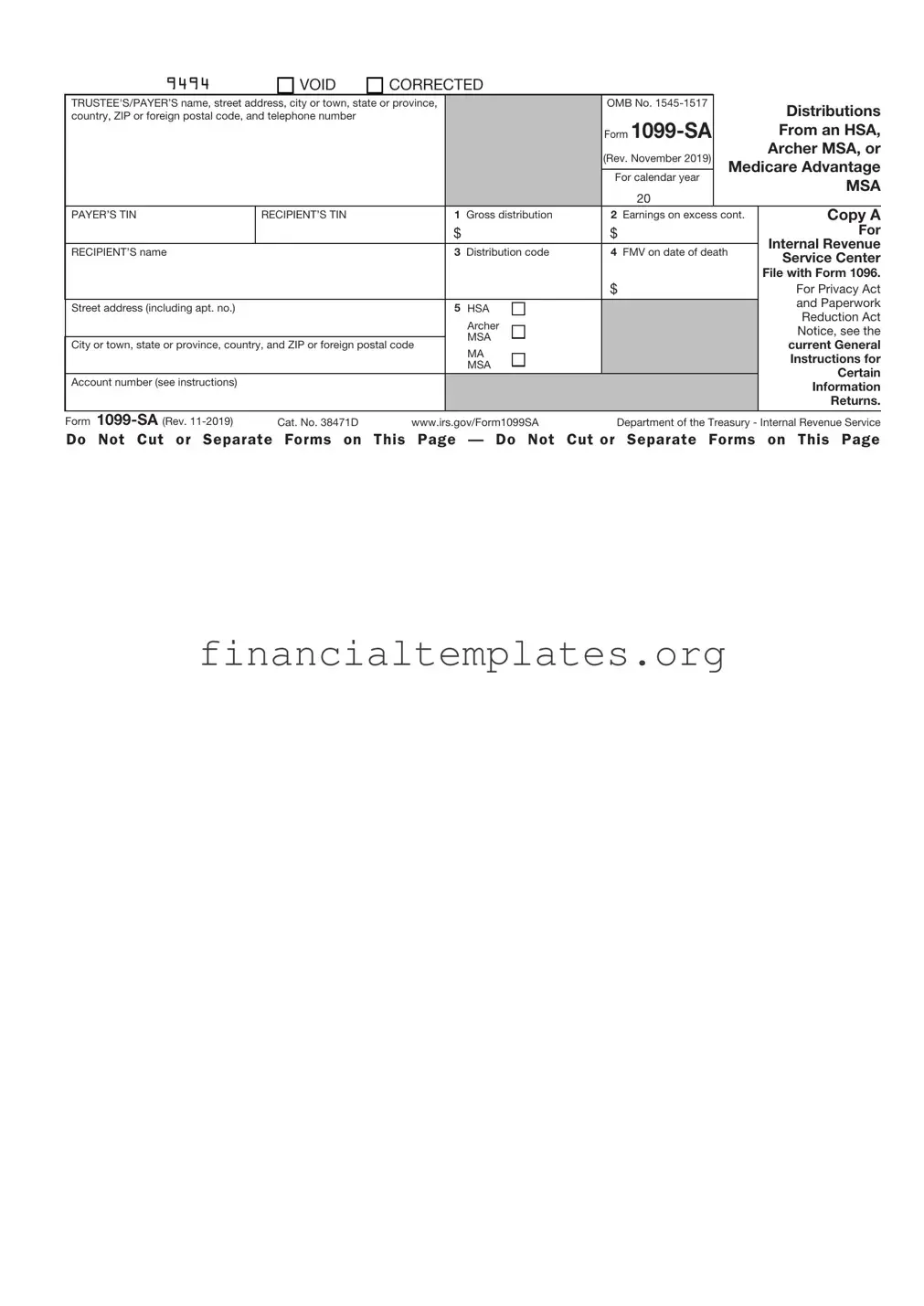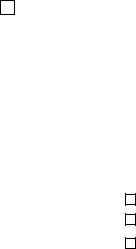The IRS Form 1099-SA, which reports distributions from a health savings account (HSA), Archer Medical Savings Account (MSA), or Medicare Advantage MSA, has characteristics similar to other IRS documents, designed to report various types of income, transactions, or financial distributions. These similarities often lie in their function of reporting to both the taxpayer and the IRS specific financial activities that may affect an individual's tax liabilities and responsibilities.
One such document is the IRS 1099-MISC form, utilized for reporting miscellaneous income such as rent, royalties, or non-employee compensation. Like the 1099-SA, the 1099-MISC serves a crucial role in ensuring individuals report and pay taxes on various types of income not covered by traditional employment. Both forms contribute to a transparent financial system where different income streams are accurately reported to the IRS.
Another related document is the IRS 1099-INT form. This form is used to report interest income from banks and other financial institutions. Similar to the 1099-SA, the 1099-INT informs the IRS of additional income that could affect the taxpayer’s total taxable income. Both documents play a pivotal role in capturing income from financial growth or distributions, underscoring their importance in the tax reporting ecosystem.
The IRS 1099-DIV form, which reports dividends and distributions from investments, shares a purposeful resemblance to the 1099-SA. Both forms are essential for individuals to report earnings received, whether those earnings are from savings account distributions or stock dividends. This connection underlines the broad spectrum of what is considered taxable income and the IRS's interest in these distributions.
The IRS 5500 series, which reports on employee benefit plans, while more complex, shares a conceptual connection with the 1099-SA. Both types of documents are involved in reporting on benefits or distributions that have tax implications for the recipient. The detailed reporting is crucial for maintaining the compliance and transparency of financial accounts associated with benefits and savings.
Similarly, the IRS Form 1099-R, used for reporting distributions from pensions, annuities, retirement or profit-sharing plans, IRAs, insurance contracts, etc., aligns with the 1099-SA's objective. Both forms are instrumental in ensuring that distributions potentially impacting a taxpayer’s income are accounted for during tax calculations. This underlines the IRS's commitment to capturing a comprehensive view of an individual's taxable income.
The IRS Form 529, which reports contributions and distributions related to educational savings accounts, also parallels the 1099-SA. Although focusing on educational financing, both forms track distributions from accounts intended for specific purposes and have implications for the taxpayer's financial statements and tax responsibilities.
IRS Form 1099-G, which is used for reporting government payments like state tax refunds and unemployment compensation, somewhat mirrors the 1099-SA. Both documents ensure that payments received from government or government-affiliated programs are reported. This similarity highlights the wide array of income sources that can affect taxation, from government refunds to health savings account distributions.
Lastly, the IRS Schedule K-1, which reports income from partnerships, S-corporations, and other pass-through entities, shares with the 1099-SA the theme of reporting income that may not be subject to regular wage-based withholding. Both documents play critical roles in tracking income from specific and perhaps less common sources, ensuring a thorough accounting of taxable income.
In sum, the IRS 1099-SA form is but one part of a larger framework designed by the IRS to monitor and tax a broad spectrum of income sources. From investment dividends to retirement distributions, these documents collectively help paint a full picture of an individual's income landscape, ensuring accurate tax reporting and compliance.



